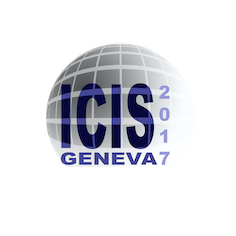Speaker
Description
Negative ion sources are used in a variety of research fields and applications such as in tandem type electrostatic accelerators, cyclotrons, storage rings in synchrotrons, nuclear and particle physics and in magnetic fusion devices. In magnetic fusion applications, negative ion sources are a subset of a Neutral Beam Injector (NBI) producing high power neutral beams which are injected into the Tokamak plasma. These fusion type negative ion sources are large volume, tandem type (i.e., a discharge and an expansion chamber) and work at low pressure (0.3 Pa). The plasma is generated typically by hot cathodes (heated filaments) or Radio-Frequency (RF) antennas (Inductively-Coupled-Plasma discharges) standing either inside or outside the discharge. Negative ions are generated on a cesiated grid (which is called “plasma grid” in contact with the plasma) as a byproduct of the bombardment of fast hydrogen or deuterium atoms. The negative atomic hydrogen (deuterium) ions are extracted through the plasma grid (PG) apertures by the high potential of an extraction grid (first grid of the NBI’s electrostic accelerator), respectively. The negative ion current produced on the PG is typically space charge saturated and a virtual cathode forms in front of the grid surface (the plasma potential presents a minimum in front of the electrode, which limits the extracted negative ion current). The flux of plasma particles (positive ions and electrons) impacting the PG controls both the shape and the magnitude of the cathode potential. More negative ions may hence escape the PG surface in a plasma compared to an hypothetical situation where the PG surface would be in vacuum. In this work, we simulate the extraction of a negative ions beam from a magnetized ion source [1, 2, 3]. The model is a Particle-In-Cell algorithm with Monte-Carlo Collisions (PIC-MCC). We show that the negative ion beam perveance P=I/V^3/2 is practically invariant with respect to the simulated plasma density and as a result a given value of the perveance corresponds qualitatively to a similar negative ion beam profile on the extraction grid (and shape of the plasma meniscus, respectively). Furthermore, the extracted beam current may be scaled to any associated value of the plasma density. Aberrations appear for a meniscus curvature radius of the order of the radius of the grid aperture. These aberrations cannot be cancelled out by switching to a chamfered grid aperture (as in the case of positive ions).
Acknowledgement
This work has been carried out within the framework of the EUROfusion Consortium and has received funding from the Euratom research and training programme 2014-2018 under grant agreement No 633053. The views and opinions expressed herein do not necessarily reflect those of the European Commission. Support from CEA and from the French Fédération de Recherche sur la Fusion Magnétique is acknowledged. This work was granted access to the HPC resources of CALMIP supercomputing center under the allocation 2013-P1125.
References
[1] J. P. Boeuf et. al., Plasma Sources Sci. and Technol. 25, 045010 (2016).
[2] G. Fubiani et. al., New J. Phys. 19, 015002 (2017).
[3] L. Garrigues et. al., J. Appl. Phys. 120, 213303 (2016).
